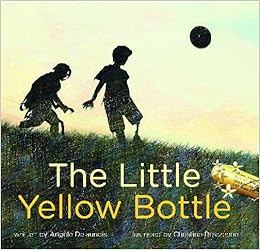Related Information
|
Comments
| |
Title
|
All My Stripes
| |
Author
|
Shaina Rudolph and Danielle Royer
| |
Illustrator
|
Jennifer Zivoin
| |
Publisher
|
Magination Press
| |
Year of Pub:
|
2015
| |
ISBN:
|
978-1-4338-1916-2
| |
Age range
|
2-10
| |
Type of Disability
|
Autism
| |
Fiction or Nonfiction
|
Fiction
| |
|
A) books that provide factual information about a disability
B) books that provide information about a disability in a story format in which the character with a disability is integral to the plot
C) books that provide stories that have a character with a disability who may or may not be integral to the story line and who has been added to the story to achieve diversity and reflect reality
D) books that include a main character with a disability but whose focus is not necessarily the disability
| ||
Link to publisher:
|
http://www.apa.org/pubs/magination/index.aspx?utm_source=Publishers+Weekly%27s+Children%27s+Bookshelf&utm_campaign=280cefd00b-UA-15906914-1&utm_medium=email
| |
Links to professional reviews:
|
http://portlandbookreview.com/2015/05/all-my-stripes-a-story-for-children-with-autism-by-shaina-rudolph-and-danielle-royer-illustrated-by-jennifer-zivoin/; http://www.amazon.com/All-My-Stripes-Children-Autism/dp/1433819171 (scroll all the way down to see reviews)
| |
Awards:
| ||
Standards for Quality Portrayal of Characters with a disability
|
Comments
| |
1. Promotes empathy not pity
|
Yes
| |
2. Promotes acceptance, not ridicule
|
Yes
| Zane's mother and Zane himself are the only characters showing acceptance by the end of the story. |
3. Emphasizes success rather than, or in addition to failure
|
Yes
| |
4. Promotes positive images of persons with disabilities or illness
|
Yes
| |
5. Assists children in gaining accurate understanding of the disability or illness
|
Yes
| Because autism is such a wide spectrum, this story portrays a specific profile of a child with autism, but it cannot be said that Zane represents all children with autism. |
6. Demonstrates respect for persons with disabilities or illness
|
Yes
| |
7. Promotes attitude of “one of us” not “one of them.”
|
Tries to
| But Zane is not shown in the company of peers after he comes to his realizations. |
8. Uses people-first language
|
Yes
| |
9. Describes the disability or person with disabilities or illness as realistic (not subhuman or superhuman)
|
Yes
| Zane has a high-degree of self-awareness, probably more than most children with autism. |
10. Depicts people with disabilities as more similar to than different from other people
|
Yes
| |
11. Shows peoples’ strengths and abilities along with their disabilities
|
Yes
| |
12. Represents characters as strong, independent people who others can admire or learn from
|
Yes
| |
13. Represents people with disabilities from different racial and cultural backgrounds, religions, age groups, and sexual orientations
|
Yes
|
Zane is a zebra, which makes him universally acceptable
|
14. Shows people with disabilities in integrated settings and activities
|
Yes
| Zane is shown in a school setting with typical peers. |
15. Shows people with disabilities in valued occupations and diverse roles.
|
No
| |
16. Shows people with disabilities in reciprocal relationships
|
No
|
Just with his mother
|
17. Main character develops and grows emotionally as a result of what happens in the story
|
Yes
|
Zane realizes that there is more to him than just autism.
|
